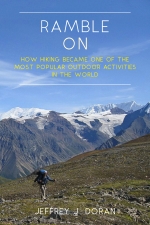| About HikinginGlacier.com |
Welcome to HikinginGlacier.com, the most comprehensive website on the internet for hiking trail information in Glacier National Park.
HikinginGlacier.com provides detailed trail information on more than 65 hikes in Glacier National Park. Unlike the national trail websites, the authors of HikinginGlacier.com have personally hiked every trail covered on this site to give you a consistent overview of each hike. You may also want to note that HikinginGlacier.com is now available in eBook format, which provides convenient access to the information contained on our website while in the park, or on the trail, where internet access is most likely unavailable.
The authors of this site also have extensive experience hiking throughout the Rocky Mountains. You can visit our sister websites for Grand Teton National Park, Rocky Mountain National Park and Discover the West. Our sites have been mentioned or referenced in a wide variety of publications and websites, including National Geographic Travel, Outside Online, Washington Post, CBS News, USA Today, Men's Journal, Travel Channel, Condé Nast Traveler, Weather Channel, Money Magazine, MSN, Huffington Post, Yahoo News, Business Insider, as well as numerous local news outlets.
In 2023, the author of this website published a book that explores the rich history of hiking. Ramble On: How Hiking Became One of the Most Popular Outdoor Activities in the World is available on Amazon.
| Contact Information |
Any feedback you have about the website would be greatly appreciated. If you have any questions or would like to see any additional information down the road, please contact us at:
If you would like to advertise on this website, please contact us at:
| HikinginGlacier.com Press Releases |
11/9/11: HikinginGlacier.com Announces Official Launch of Website
2/18/20: Publication of Exploring Glacier National Park
2/7/23: Publication of Ramble On (a history of hiking)
5/8/24: Publication of Ultimate Hiking Guide to the Rocky Mountains
| Explanantion of Hike Difficulty Rating |
Several years ago I noticed the various rating systems that were being used to gauge hike difficulty levels tended to be too general, or were highly subjective. While researching hikes for a trip to Colorado I discovered a website that attempted to remove the subjectivity out of trail difficulty ratings by means of a mathematical formula. The formula was originally developed by Paul Petzoldt, an accomplished mountaineer and founder of the National Outdoor Leadership School (NOLS). In 1976, he proposed a theory in his book, Teton Trails, to help backpackers calculate their nutritional requirements during a trip. His theory states that one energy mile is equal to the energy required to walk one mile on flat terrain. His theory also asserts that you need to add two energy miles for every thousand feet of elevation gain. In other words, if you climbed one thousand feet over the course of a mile you would use the equivalent of three energy miles.
Petzoldt's theory stood untested for almost thirty-five years. However, in 2010, Western Carolina University’s Exercise Physiology Laboratory conducted a study to measure the energy cost and perceived exertion while walking on flat terrain, with and without a backpack, and compared it to walking one mile with a thousand feet of elevation gain. Results from the study showed that the average additional energy cost for ascending a thousand feet of elevation was 1.6. However, wide differences were recorded among females and males, which ranged between 1.32 and 2.02. The lead researcher for the project, Dr. Maurice Phipps, stated in a WCU news article that the broad range in results was due to weight differences among participants. The abstract from the study also speculates that heavier expedition packs at higher elevations could impact energy costs as well, but further research was needed. Professor Phipps noted that, "It is remarkable that Petzoldt's energy mile theory is so close to the actual energy cost measured during our study." While energy requirements will differ among individuals based on a range of variables, including weight, Phipps ultimately recommends that hikers and backpackers continue using Petzoldt’s method of adding two energy miles for every thousand feet of elevation gain.
As a result of all this, Petzoldt's formula has allowed me to gauge the relative difficulty of the hikes covered on this online trail guide. Of course these ratings are only one indicator of hike difficulty. Each hike has its own variables beyond elevation gain and distance. This includes weather, experience, fitness level, trail conditions and altitude, among a range of other factors. This rating system simply gives the hiker a general reference point between one trail and another.
As a general rule of thumb a difficulty rating of less than 5 is considered to be an easy hike. Between 5 and 10 is moderate, and anything above 10 is considered to be strenuous. Novice hikers should probably allocate at least 20-30 minutes to walk a mile on flat terrain. If you plan to take a lot of photos, rest breaks or choose a hike with significant elevation gain, then you will need to add those factors into your time estimates.


